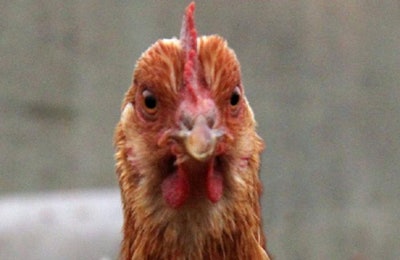
With the number of outbreaks nationwide so far this year rising to 76, highly pathogenic avian influenza (HPAI) continues to inflict significant damage on Italy’s poultry sector. There have also been new cases in a commercial ducks flock in Taiwan.
Italy’s count of confirmed HPAI outbreaks linked to the H5N8 virus variant has increased by a further seven over the last week to reach 76 since January 2017, based on the latest information from Italian health authority and research organization for animal health and food safety (IZSVe). Almost 231,000 birds were affected by these latest outbreaks.
Four of the most recently confirmed outbreaks — three in the region of Lombardy and one in Piedmont — were in commercial laying hens in flocks ranging in size from 24,550 to more than 76,000. An H5 virus was also detected at two farms with almost 30,000 breeder chickens and 13,642 meat turkeys in Lombardy in the last week.
The region of Lazio has recorded its first HPAI cases of the year — in a flock of around 100 laying hens at a rural farm in the province of Rome.
As well as disease outbreaks in the commercial poultry sector, Italy’s animal health authority has also confirmed the presence of the H5N8 HPAI virus in the wild bird population. The agency reported to the World Organisation for Animal Health (OIE) that the virus was detected in three birds found dead at two locations in the province of Ferrara in Emilia-Romagna at the end of October.
Compensation scheme for French poultry producers
France’s agriculture minister, Stéphane Travert, is setting in motion a compensation scheme to cover half of the economic losses that followed a series of previous H5N8 HPAI outbreaks. Chicken, duck and goose farmers in the southwest of the country were unable to source enough young birds to restart their businesses after health restriction were lifted.
According to the French agriculture ministry, as part of a state aid scheme, payment of the funds — amounting to EUR77 million (US$90 million) — will need to be authorized by the European Commission.
With the wild bird migration season in full swing, the minister warned poultry producers to maintain strict biosecurity measures, and that the sector would be responsible for economic losses in case of a new HPAI crisis.
New HPAI outbreak in Taiwanese ducks
A commercial flock of 6,250 ducks in Dongshi in Yunlin county is the latest to be affected by HPAI of the H5N2 virus subtype, according to the latest official report to the OIE. All birds are reported to have been destroyed, and the usual sanitary and surveillance measures have been put in place.
Japan detects first HPAI virus in wild birds
The agriculture ministry in Tokyo has reported to the OIE the first detection of H5N6 HPAI virus in the new wild bird migration season. A swan found dead in Shimane prefecture in the south-west of the main island of Honshu has tested positive for this variant of the virus. Wild bird surveillance is being stepped up.
At the same time, and after the H5N6 HPAI virus had been confirmed in 170 wild birds of many species in Japan between November 2016 and March of this year, the ministry has reported to the OIE that that series of disease events was resolved.

















